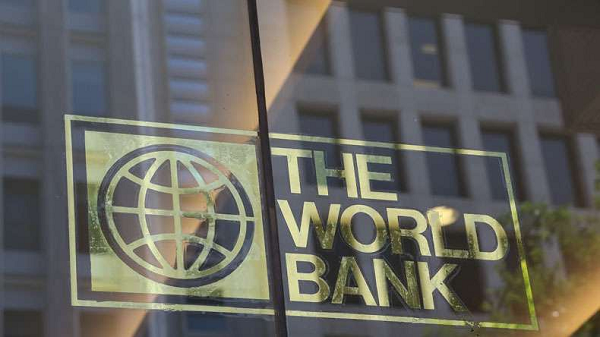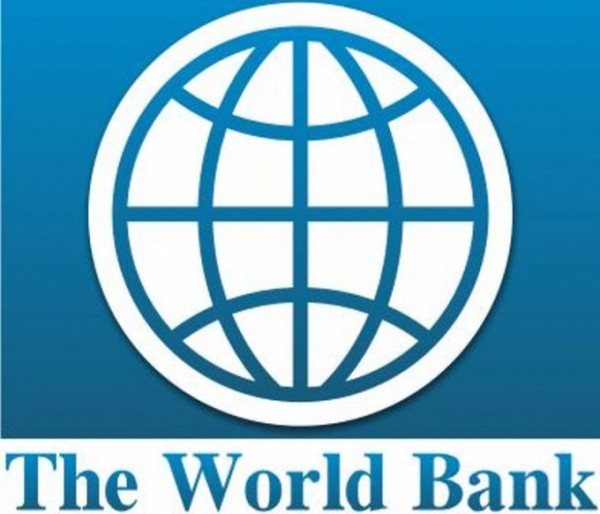
by Editor | May 25, 2021 | Muslim World
 Washington (IINA) – The World Bank has suspended its funding for the first phase of the Inga 3 power project in the Democratic Republic of Congo, amid concerns over compliance with environmental and social standards.
Washington (IINA) – The World Bank has suspended its funding for the first phase of the Inga 3 power project in the Democratic Republic of Congo, amid concerns over compliance with environmental and social standards.
The lender said on Monday that it withdrew its funding following disagreements over the “strategic direction” of the project. “This follows the Government of DRC’s decision to take the project in a different strategic direction to that agreed between the World Bank and the government in 2014,” the bank said in a statement.
In 2014, World Bank had approved a $ 73.1 million grant for the $14 billion first phase of the mega hydroelectric project and went ahead to disburse 6 percent of the funding.
At stake is a project that has the capacity to generate a record 44,000 MW of electricity at a cost of nearly $100 billion upon completion and could power half of Africa, while some say it will be the largest dam in the world. However, Congolese government remains confident that the project will continue, adding that construction is expected to begin in June next year and last for about five years.

by Editor | May 25, 2021 | Muslim World
 Dhaka, (IANS) The World Bank has approved $150 million in additional financing to help strengthen Bangladesh’s health systems and improve its services.
Dhaka, (IANS) The World Bank has approved $150 million in additional financing to help strengthen Bangladesh’s health systems and improve its services.
The financing will support implementation of the government’s health sector-wide programme, Xinhua news agency cited the World Bank as saying in a statement on Sunday.
The support will help the government address health sector challenges, including sustaining and improving immunisation coverage, further improving deliveries for pregnant women at public health facilities and tackling multi-drug resistant tuberculosis.
It will also help Bangladesh improve public financial management to get more value from its public spending on health.
The programme and its predecessors have contributed to a 40 per cent reduction in maternal mortality since 2010, the World Bank said.
Bangladesh has reduced under-five child mortality by 29 per cent between 2007 and 2014, and during the same period, births attended by medically trained professionals increased from 21 per cent to 42 per cent, it said.
With this financing, the World Bank’s support to the project now stands at $508.9 million.

by Editor | May 25, 2021 | Economy, News
 By Meghna Mital, New Delhi, (IANS) The World Bank has dropped the use of developing nation tag for India in its specialised reports and instead classifies it as a “lower-middle-income” economy in South Asia, a top official has said.
By Meghna Mital, New Delhi, (IANS) The World Bank has dropped the use of developing nation tag for India in its specialised reports and instead classifies it as a “lower-middle-income” economy in South Asia, a top official has said.
“In our World Development Indicators publication, we’ve stopped grouping low- and middle-income countries together as ‘developing countries’. For analytical purposes, India continues to be classified as lower-middle-income economy,” World Bank Data Scientist Tariq Khokhar told IANS.
“We are not changing term ‘developing countries’ or ‘developing world’ in our general work but when it comes to presenting specialized data, we will use more precise groupings of countries,” Khokhar said in an e-mail interview, adding, the term developing country was no more useful for analytical purposes.
Accordingly, while India will be referred to as a lower-middle-income economy in all of World Bank’s analytical reports, it may be referred to as a developing country only in some of the generic communications.
The decision to stop using the term developing countries, the World Bank specialist said, has been taken in view of the word having no universal definition, causing countries like Malaysia and Malawi to be come under the same category earlier.
“There is no internationally agreed definition of the term ‘developing world’. There’s often a big gap between the countries within the developing world grouping — which make, for instance, Malaysia and Malawi both developing countries,” Khokhar said.
Malaysia has a gross domestic product of $338.1 billion, according to the 2014 figures, while Malawi’s stands at a merely $4.258 billion. Now while Malaysia is referred to as upper middle-income economy, Malawi falls in a low-income classification.
As per the classification, Afghanistan, Bangladesh and Nepal are low-income economies, Pakistan and Sri Lanka fall under lower-middle-income, Brazil, South Africa and China under upper middle income, Russia and Singapore under high-income-Non-OECD and the US under high income-OECD.
Meghna Mital can be reached at meghna.m@ians.in)

by Editor | May 25, 2021 | World
 New Delhi:(IANS) India and the World Bank on Tuesday signed two financing agreements aimed at reducing vulnerability of coastal communities from cyclones and hydro meteorological hazards.
New Delhi:(IANS) India and the World Bank on Tuesday signed two financing agreements aimed at reducing vulnerability of coastal communities from cyclones and hydro meteorological hazards.
The National Cyclone Risk Mitigation Project-I (NCRMP-I) and NCRMP-II, valued at $104 million and $308.4 million respectively, will help eight Indian states — with coastlines on either sides of the peninsula — improve their access to emergency shelter, evacuation against wind storms and flooding and storm surge in high risk areas.
The states are Andhra Pradesh, West Bengal and Odisha on the eastern side on the Bay of Bengal coast, and Goa, Gujarat, Karnataka, Kerala and Maharashtra on the Arabian Sea coast, a finance ministry statement said.
The projects will empower the states to effectively plan for and respond to disasters.
Both projects consist of four components — early warning dissemination system (EWDS) and capacity building for coastal communities, cyclone risk mitigation infrastructure, technical assistance for national and state level capacity building on disaster risk management and project management and implementation support, the statement said.
NCRMP-II will also finance technical assistance for strengthening multi-hazard risk management at the national level and enhance the quality of available information on multi-hazard risk to enable decision-making across the nation.
At the national level, the projects will be implemented by the home ministry through the National Disaster Management Authority (NDMA) while at the state level, the projects will be executed by disaster management authorities.
Government officials from the benefiting states signed the agreement with John Blomquist, programme leader and World Bank’s acting country director in India.

by Editor | May 25, 2021 | Business, Emerging Businesses, Opinions

By Amit Kapoor
The acronym BRICS (Brazil, Russia, India, China, and South Africa) is attributed to economist Jim O’Neill of the Goldman Sachs, who initially coined the term and hypothesized their rise at the turn of the century.
Today, BRICS together account for 30 percent of global land, 43 percent of global population, 17.3 percent of the world’s merchandise trade, 12 percent of global commercial services and 45 percent of the world’s agricultural production. These staggering statistics suggest a potential to lead from the front in the comity of nations. This year’s summit was the seventh meeting of the global club that sets the precedent for an emerging global order. The theme of this year’s summit was ‘BRICS Partnership – A Powerful Factor for Global Development’. The summit resulted in the Ufa declaration that essentially talks about broadening the Intra-BRICS regional cooperation.
A high point in this year’s summit was further steps for operationalization of the BRICS bank or ‘New Development Bank’ (NDB). The NDB had taken proper shape during the previous BRICS summit in Fortaleza in Brazil. The NDB has at present an equal contribution from the all the members unlike the Bretton Woods twins (namely the World Bank and IMF) and other multilateral banks like the Asian Development Bank. These have varied contributions from different member states. The first President of the NDB was decided to be from India in the previous summit and the Indian government was prompt to name veteran banker KV Kamath as NDB’s first president. Before the summit in Ufa, Kamath made a statement about operationalizing the BRICS bank and approving the first loan by April 1, 2016.
Four points about the recent summit and the broader trends that it points to are noteworthy:
First, there is increasing multipolarity and multilateralism in world affairs. The post-Soviet world is fragmented and at the same time a lot of negotiations are happening at the bilateral and multilateral level. Prime Minister Narendra Modi, prior to attending the BRICS and the SCO Summits, visited the five central Asian countries of Turkmenistan, Tajikistan, Uzbekistan, Kyrgyzstan, and Kazakhstan. These visits point to India’s increasing reliance on talks for furthering its interests and boosting trade.
Second, geography matters but its influence in global affairs is reducing. It is reflected in the fact that countries from different continents are willing to engage and embrace each other. It also points to a new kind of multilateralism that is not overtly dependent upon the primary platforms for trade especially the World Trade Organization and earlier related trade bodies. It is a great force in international trade and diplomacy especially for countries like India, which are out of some of the major Mega Regional Trade Agreements.
Third, the creation of newer multilateral development banks like the BRICS bank and AIIB (Asian Infrastructure Investment Bank) are a testimony to the aspirations of the developing world for greater infrastructure and economic development. It also shows their enthusiasm as well as their growing power and sphere of influence. It does not necessarily mean reduction in the role of the other multilateral banks especially the Bretton Woods twins. However with these developments, it certainly reduces the overdependence and overreliance on the earlier multilateral institutions for financing economic development.
Finally, groupings like the BRICS have found a new amplified voice in the world affairs. It can be gauged from the response of President Putin when asked by journalists on his take on EU and Greece: “Of course, all the blame can be shifted to the Greeks. But if there were violations in their activity, where was the European Commission? Why didn’t it make any adjustments to the economic activity of the previous government of Greece?” Though blunt, it clearly shows growing assertiveness on the part of leaders from the BRICS in world affairs.
The next BRICS summit is slated to be held in India. The changing stature of BRICS suggests that they have now begun to exert significant influence in world affairs and are shifting the economic and strategic balance towards the developing country side. How far will the balance shift over the long time frame remains to be seen.
(The article is co-authored with Sankalp Sharma, Senior Researcher at the Institute for Competitiveness, India. is Chair, Institute for Competitiveness & Editor of Thinkers. The views expressed are personal. Amit can be reached at amit.kapoor@competitiveness.in and tweets @kautiliya)

 Washington (IINA) – The World Bank has suspended its funding for the first phase of the Inga 3 power project in the Democratic Republic of Congo, amid concerns over compliance with environmental and social standards.
Washington (IINA) – The World Bank has suspended its funding for the first phase of the Inga 3 power project in the Democratic Republic of Congo, amid concerns over compliance with environmental and social standards.



